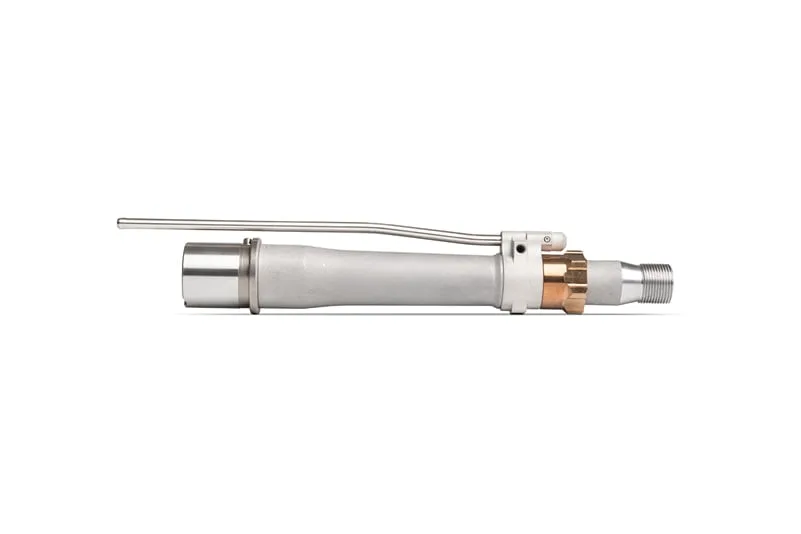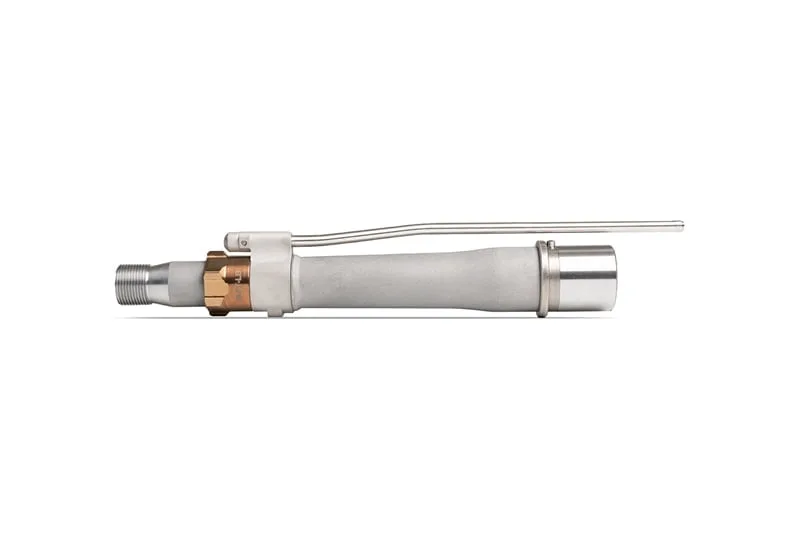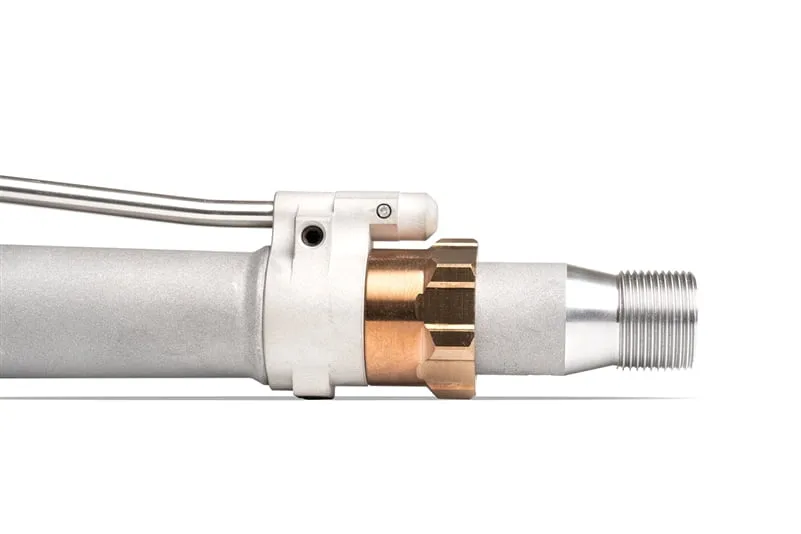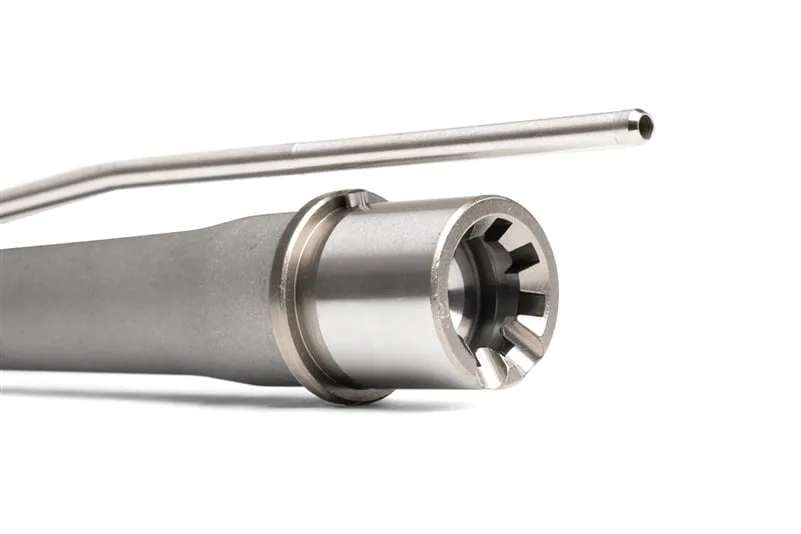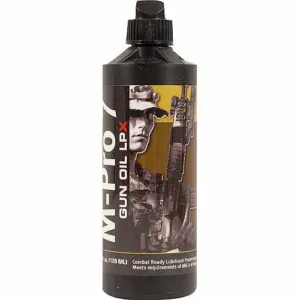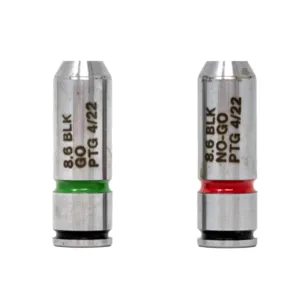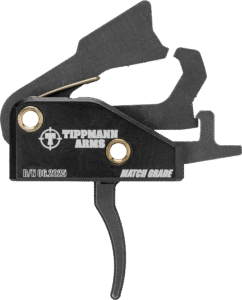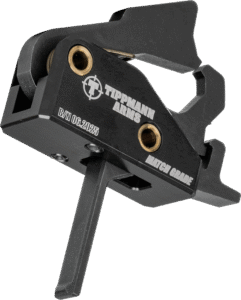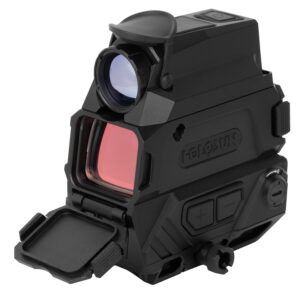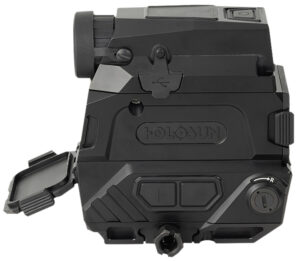INSTALLATION INSTRUCTIONS
Please refer to your firearms safety manual before performing any maintenance on your own. Seek help from a qualified gunsmith if you don’t know what the fuck you’re doing.
GAS BLOCK TO BARREL
- With your barrel nut torqued in place, slide the gas block over the barrel. Make sure that the notch on your gas block is aligned with the gas block index pin on the barrel.
- Thread the gas block jam nut on to the barrel.
- Locate the adjustment screw jam nut at the bottom of the gas block and hand tighten with a 5/64 – inch Allen key wrench.
- With a 7/8 in wrench, tighten the gas block jam nut to 35 ft-lbs of torque.
The HONEY BADGER barrel assembly comes with an adjustable gas block to ensure the rifle performs optimally with the wide variety of ammunition loads on today’s market. As shipped, it will likely need to be adjusted to your specific cartridge of choice.
THIS GAS BLOCK IS NOT INTENDED TO BE ADJUSTED “ON THE FLY”. WHILE YOU MAY FIND A HAPPY MEDIUM SETTING FOR SUB AND SUPERSONIC AMMUNITION, WE HIGHLY ENCOURAGE DIALING IT IN FOR ONE SPECIFIC CARTRIDGE FOR OPTIMUM PERFORMANCE.
WHEN TO INCREASE GAS
- Failure to EXTRACT: This happens when there is not enough gas to unlock the bolt and drive the bolt carrier to the rear.
- Failure to FEED (AKA Short Stroke, which happens to be my high school nickname): Your rifle has enough gas to unlock and eject the spent case, but not enough to pick up the next cartridge in the magazine from the rear of the case.
- Weak EJECTION: Your rifle has enough gas to unlock and extract the empty case, but not quite enough to send the bolt carrier group all the way to the rear. This causes the spent case to miss the brass deflector all together and eject rear of the 5 o’clock position (assuming the ejection port is 3 o’clock).
- Failure to LOCK: The bolt does not lock to the rear on an empty magazine. Keep in mind that the bolt catch can also engage the bolt carrier and this does not constitute as proper lock back.
WHEN TO DECREASE GAS
- Failure to EJECT (AKA Stove Pipe, which happens to be my other high school nickname): The rifle is over functioning and the bolt carrier group is returning forward before the spent case can properly eject.
- Forward / Erratic Ejection: The case is ejecting without failure, but the ejection pattern is forward of the ejection port or ejecting in an inconsistent pattern.
- Failure to FEED (bolt-override): The bolt carrier group is cycling too fast and the magazine can’t keep up. Either the bolt picks up the next cartridge halfway up the case, or the cartridge is missed all together and the bolt closes on an empty chamber. THIS MAY BE DUE TO A POORLY FUNCTIONING MAGAZINE. ENSURE YOUR MAGAZINE IS CLEAN BEFORE ASSUMING IT’S CAUSED BY TOO MUCH GAS.
- Failure to CHAMBER: The feeding cartridge hits the feed ramp too fast and stops high on the face of the chamber OR the cartridge enters chamber but doesn’t fully seat due to cartridge deformation.
FOLLOW THESE INSTRUCTIONS TO INCREASE OR RESTRICT THE AMOUNT OF GAS DELIVERED TO THE RIFLE.
- Now that the gas block is exposed, use a 5/64- inch Allen key wrench to loosen and remove the adjustment screw jam nut.
- Using a .05-inch Allen key, rotate the adjustment screw to increase or decrease the gas flow. REINSTALL THE GAS BLOCK ADJUSTMENT LOCK SET SCREW BEFORE TESTING FIRING TO ENSURE THE ADJUSTMENT SCREW DOESN’T MOVE ON YOU. IF YOU CHOOSE TO CONFIRM YOUR ADJUSTMENT WITHOUT THE HANDGUARD INSTALLED, REMEMBER THAT BARRELS, GAS BLOCKS, AND SILENCERS GET HOT.
- With your gas adjustment confirmed, ensure the gas block adjustment lock set screw is tight. To confirm this, screw it in until it is snug against the adjustment set screw. Once snug, rotate it 1/4 turn more.
- Reinstall the handguard over the barrel nut and receiver.

